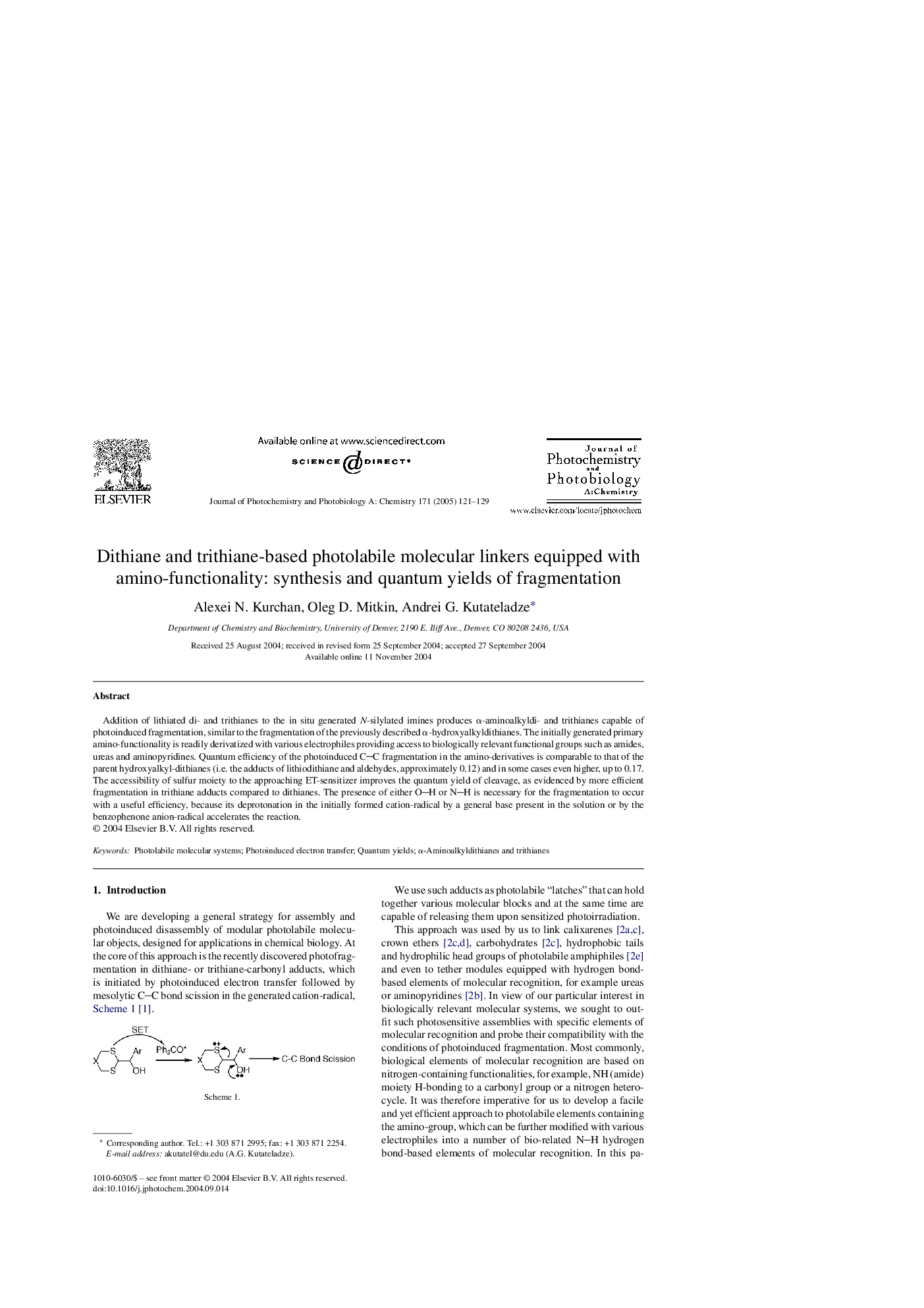| Article ID | Journal | Published Year | Pages | File Type |
|---|---|---|---|---|
| 9605672 | Journal of Photochemistry and Photobiology A: Chemistry | 2005 | 9 Pages |
Abstract
Addition of lithiated di- and trithianes to the in situ generated N-silylated imines produces α-aminoalkyldi- and trithianes capable of photoinduced fragmentation, similar to the fragmentation of the previously described α-hydroxyalkyldithianes. The initially generated primary amino-functionality is readily derivatized with various electrophiles providing access to biologically relevant functional groups such as amides, ureas and aminopyridines. Quantum efficiency of the photoinduced CC fragmentation in the amino-derivatives is comparable to that of the parent hydroxyalkyl-dithianes (i.e. the adducts of lithiodithiane and aldehydes, approximately 0.12) and in some cases even higher, up to 0.17. The accessibility of sulfur moiety to the approaching ET-sensitizer improves the quantum yield of cleavage, as evidenced by more efficient fragmentation in trithiane adducts compared to dithianes. The presence of either OH or NH is necessary for the fragmentation to occur with a useful efficiency, because its deprotonation in the initially formed cation-radical by a general base present in the solution or by the benzophenone anion-radical accelerates the reaction.
Related Topics
Physical Sciences and Engineering
Chemical Engineering
Bioengineering
Authors
Alexei N. Kurchan, Oleg D. Mitkin, Andrei G. Kutateladze,
